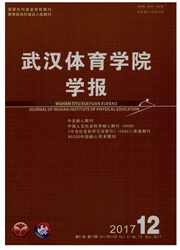

 中文摘要:
中文摘要:
采用文献资料法和数理统计法,分析和总结了1960-1997年美国四大体育联盟场馆的区域分布特征及其成因。研究得出这一时期场馆经历了由城市中心化向郊区化扩散,而后又回归于城市中心的分布变动过程。同时,导致场馆呈现上述分布特征的成因主要包括:政府干预、城市振兴计划、土地利用性、经济利益驱使、球队专营权控制、人口因素等。借鉴美国经验,可为今后我国体育场馆的合理布局提供理论与实践指导。
 英文摘要:
英文摘要:
Through literature study and mathematical statistics, the paper summarizes the regional distribution features and causes of American four sports league stadiums from 1960 to 1997. The stadiums in U. S. experienced the process of distribution change, from city center to suburbs, and then back to city center. It is held that the causes of the stadium dis- tribution features include intervention of government, urban revitalization plan, availability of land, economic interests, control of franchise right and population. American experience can provide theoretical and practical guidance for the ration- al distribution of stadiums in China.
 同期刊论文项目
同期刊论文项目
 同项目期刊论文
同项目期刊论文
 期刊信息
期刊信息
